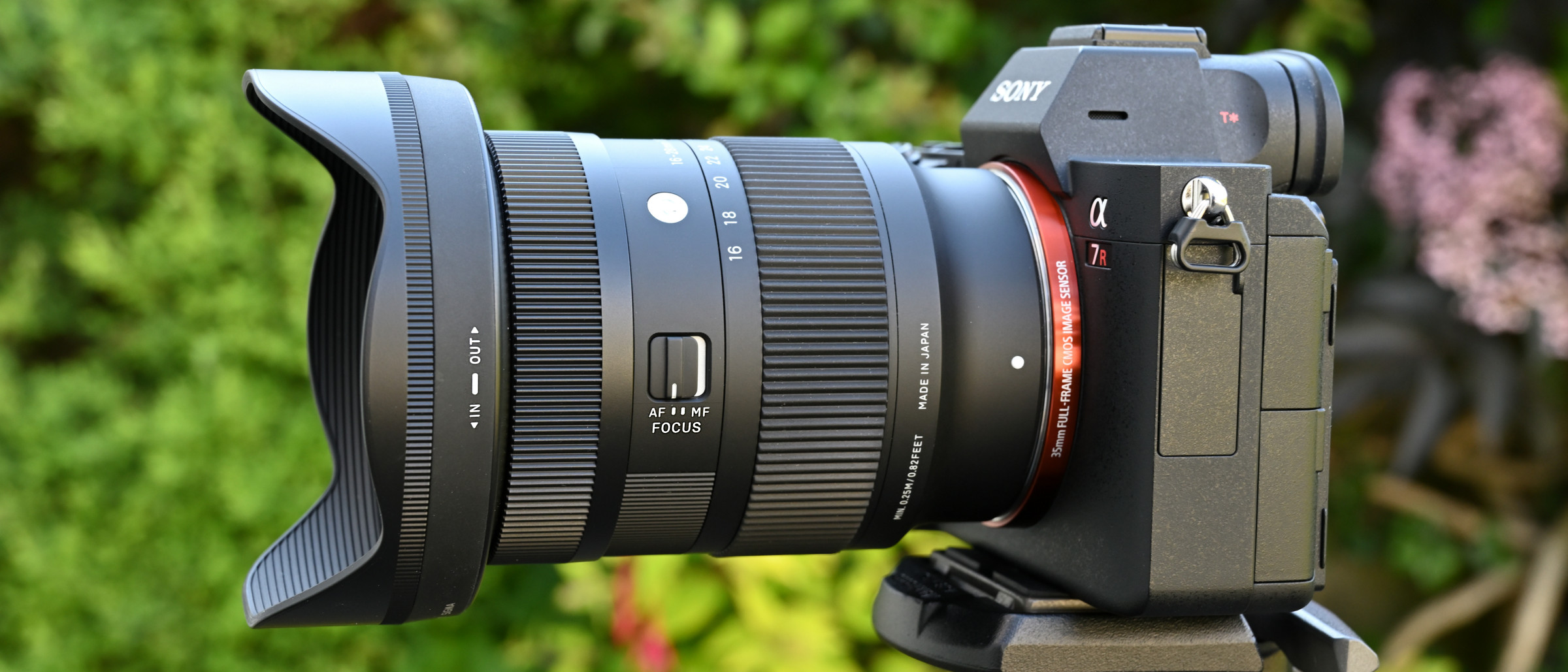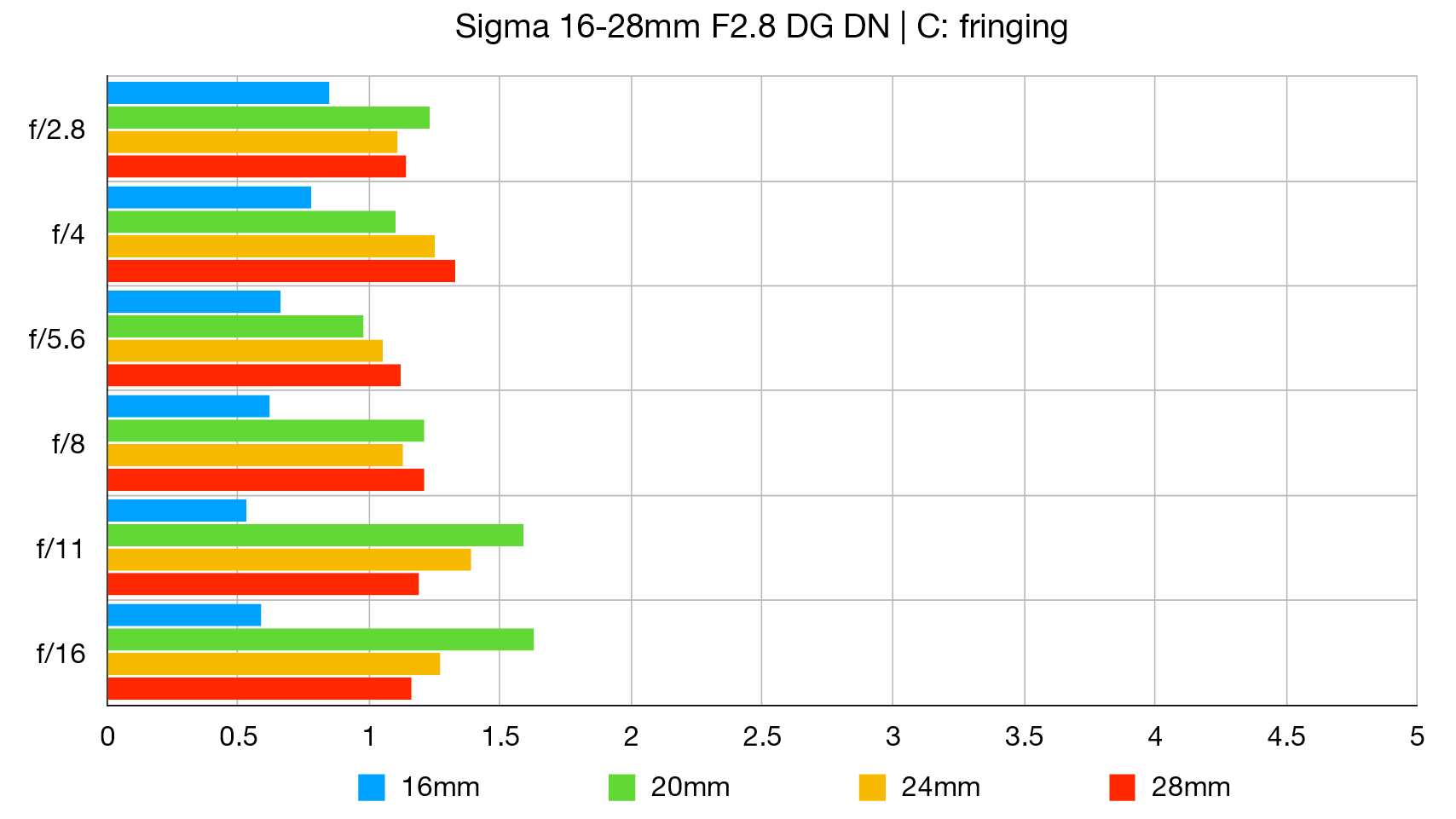Digital Camera World Verdict
Wide-angle zooms for full-frame cameras are notoriously big and heavy, especially if they have a fast and constant f/2.8 aperture rating. Following in the footsteps of the Tamron 17-28mm f/2.8 Di III RXD, this Sigma lens shoehorns an expansive field of view into a relatively compact and lightweight build, yet delivers excellent image quality and all-round performance. It relies quite heavily on in-camera correction for distortions, as do many recent mirrorless lenses, but it’s a great travel companion and very good value at the price.
Pros
- +
Impressive sharpness and clarity
- +
Robust weather-resistant build
- +
Compact and lightweight
Cons
- -
No customizable function buttons
- -
No aperture control ring
- -
No optical stabilizer
Why you can trust Digital Camera World
The Sigma 16-28mm F2.8 DG DN | C sets out to beat Tamron at its own game. A while ago Tamron brought something different to the market for Sony full-frame mirrorless cameras. It launched brace of comparatively compact and lightweight f/2.8 wide-angle and standard zooms, in the shape of the Tamron 17-28mm f/2.8 Di III RXD and Tamron 28-75mm f/2.8 Di III VXD, the latter of which has now been replaced by the G2 model. Sigma has followed suit with a pair of ‘Contemporary’ lenses at the same budget-friendly prices, being the Sigma 16-28mm F2.8 DG DN | C and Sigma 28-70mm f/2.8 DG DN | C, which are available in both Sony E and Leica L mount options. Let’s take a closer look at the wide-angle 16-28mm.
Specifications
Mount: Sony E, Leica L
Full-frame: Yes
Autofocus: Yes
Stabilization: No
Lens construction: 16 elements in 11 groups
Angle of view: 107-75.4 degrees
Diaphragm blades: 9
Minimum aperture: f/22
Minimum focusing distance: 0.25m
Maximum magnification ratio: 0.18x
Filter size: 72mm
Dimensions: 77x103mm
Weight: 450g
Key features
A key feature of any wide-angle lens is just how wide-angle it actually is. Being a millimeter shorter than the competing Tamron 17-28mm, the Sigma gives a slightly larger maximum viewing angle of 107 degrees, compared with the Tamron’s 103 degrees. The fast and constant f/2.8 aperture rating is another key feature that sets the lens apart from ‘slower’ f/4 and variable-aperture wide-angle zooms.
The impressive optical path includes two large-diameter aspherical elements, a further two aspherical elements and no less than five top-grade FLD (‘Fluorite’ Low Dispersion) elements, aiming to maximize edge-to-edge sharpness and clarity, while keeping chromatic aberrations to a minimum. Both of Sigma’s Super Multi-Layer Coatings and Nano Porous Coatings are applied to minimize ghosting and flare.
A linear stepping motor delivers fast and consistently accurate autofocus for stills, along with smooth and virtually silent focus transitions for movie capture. There’s no optical stabilizer but that’s only an issue when using first-generation Sony full-frame mirrorless cameras that lack in-body stabilization.
Build and handling
Although compact and lightweight for a wide-angle f/2.8 zoom, the lens is very well built. Typical of most recent Sigma lenses, it features a coated brass mounting plate and an extensive set of weather-seals.
Handling is refined, with a smooth and precise action to the zoom and focus rings. Handling is also enhanced by the lens having fully internal zoom and focus mechanisms, so it doesn’t physically extend at any setting. The center of gravity therefore remains fixed, making the lens ideal for use with a gimbal. However, there are no extras like an aperture control ring or a customizable lens function button, in keeping with the compact nature of the design. At least there’s an easy-access AF/MF focus mode switch on the barrel.

Performance
Sharpness is uniformly excellent through the zoom and aperture ranges, apart from a minor dip in edge-sharpness at 20mm f/2.8. There’s fairly little in the way of color fringing but distortions are quite pronounced. That’s something we’re seeing more and more in relatively compact lenses designed for mirrorless cameras, with more reliance on in-camera corrections. Resistance to ghosting and flare is very good.
Bokeh is pretty smooth for a wide-angle zoom, especially when shooting close-ups at the long end of the zoom range at f/2.8. You can get in nice and close too, thanks to a minimum focusing distance of 0.25m which enables a maximum magnification ratio of 0.18x All in all, overall performance and image quality are excellent.
Sample images
Lab results
We run a range of lab tests under controlled conditions, using the Imatest Master testing suite. Photos of test charts are taken across the range of apertures and zooms (where available), then analyzed for sharpness, distortion and chromatic aberrations.
We use Imatest SFR (spatial frequency response) charts and analysis software to plot lens resolution at the center of the image frame, corners and mid-point distances, across the range of aperture settings and, with zoom lenses, at four different focal lengths. The tests also measure distortion and color fringing (chromatic aberration).
Sharpness:
Levels of sharpness are excellent at the center of the frame, even when shooting wide-open at f/2.8, throughout the entire zoom range. Sharpness also holds up very well towards the extreme edges and corners of the frame, apart from a minor dip at 20mm f/2.8.
Fringing:
The best camera deals, reviews, product advice, and unmissable photography news, direct to your inbox!
Axial chromatic aberration is very negligible even wide-open at f/2.8. Lateral chromatic aberration is minimal at the short end of the zoom range but creeps up a little in the 20-28mm sector. Even so, it’s quite slight and easily within the remit of automatic in-camera correction.
Distortion:
There’s pronounced barrel distortion at 16mm and noticeable pincushion in the 20-28mm range. Like many other recent lenses designed for mirrorless cameras, there’s a dependence on automatic in-camera correction.
Verdict
Wide-angle zooms for full-frame cameras are notoriously big and heavy, especially if they have a fast and constant f/2.8 aperture rating. Following in the footsteps of the Tamron 17-28mm f/2.8 Di III RXD, this Sigma lens shoehorns an expansive field of view into a relatively compact and lightweight build, yet delivers excellent image quality and all-round performance. It relies quite heavily on in-camera correction for distortions, as do many recent mirrorless lenses, but it’s a great travel companion and very good value at the price.
Read more:
• Best camera lenses to get
• Best Canon lenses
• Best Nikon lenses
• Best Sony lenses
Matthew Richards is a photographer and journalist who has spent years using and reviewing all manner of photo gear. He is Digital Camera World's principal lens reviewer – and has tested more primes and zooms than most people have had hot dinners!
His expertise with equipment doesn’t end there, though. He is also an encyclopedia when it comes to all manner of cameras, camera holsters and bags, flashguns, tripods and heads, printers, papers and inks, and just about anything imaging-related.
In an earlier life he was a broadcast engineer at the BBC, as well as a former editor of PC Guide.













